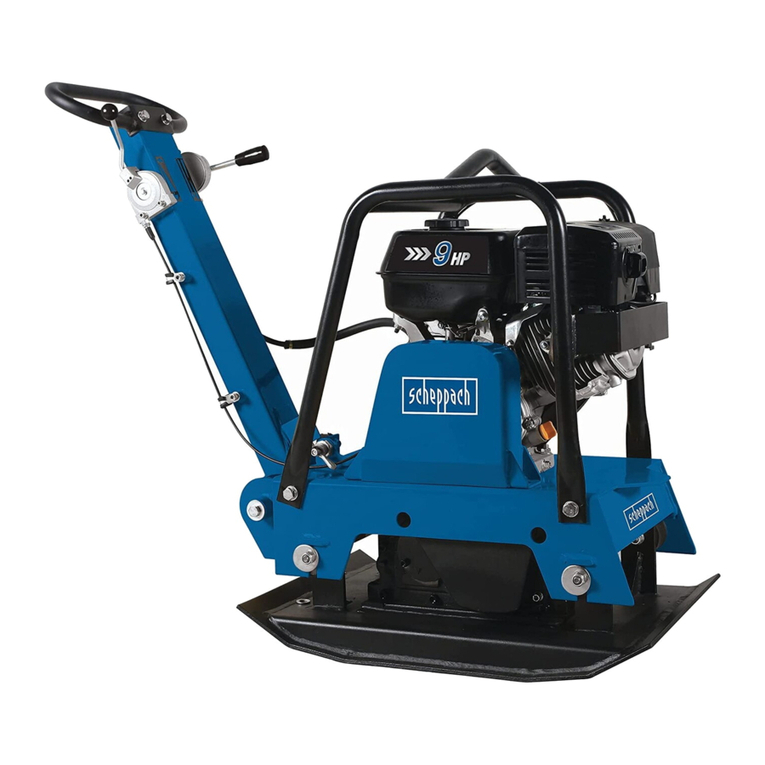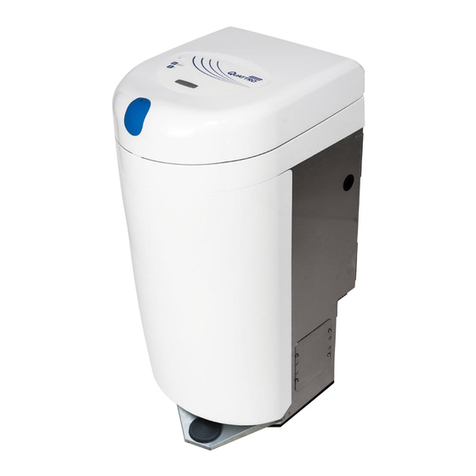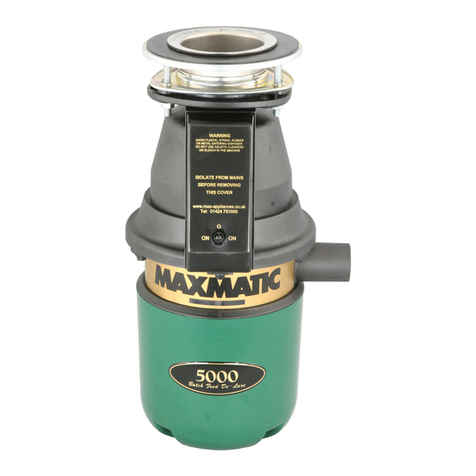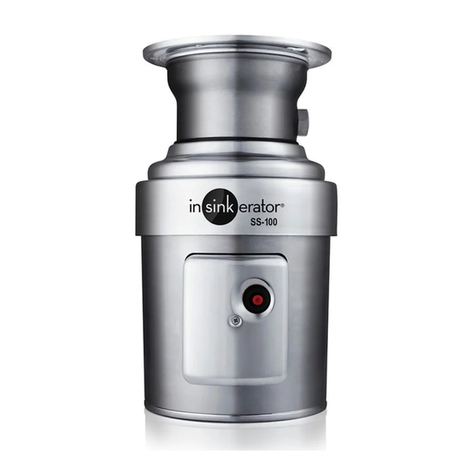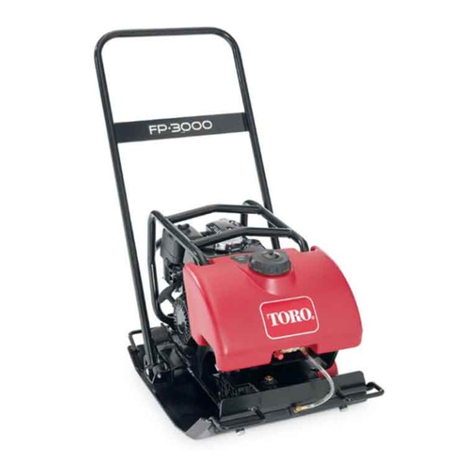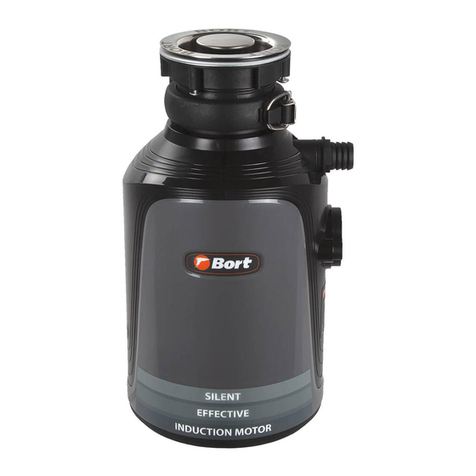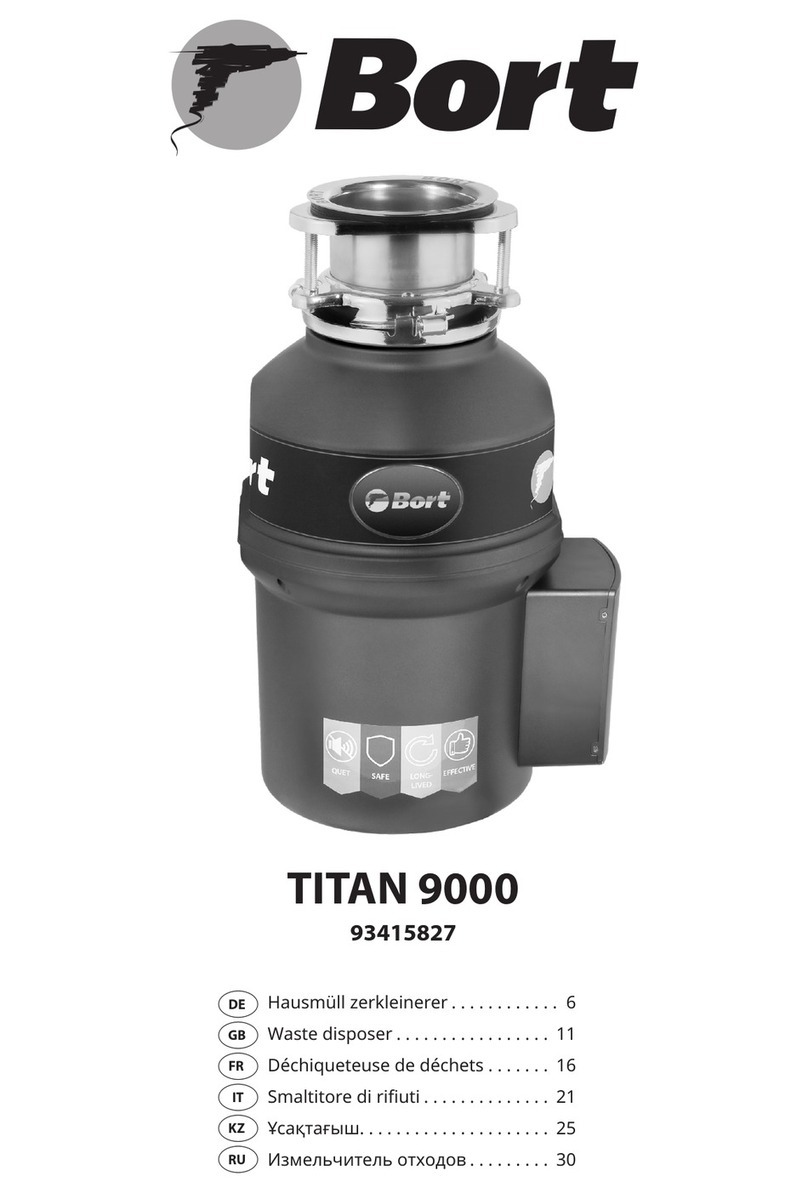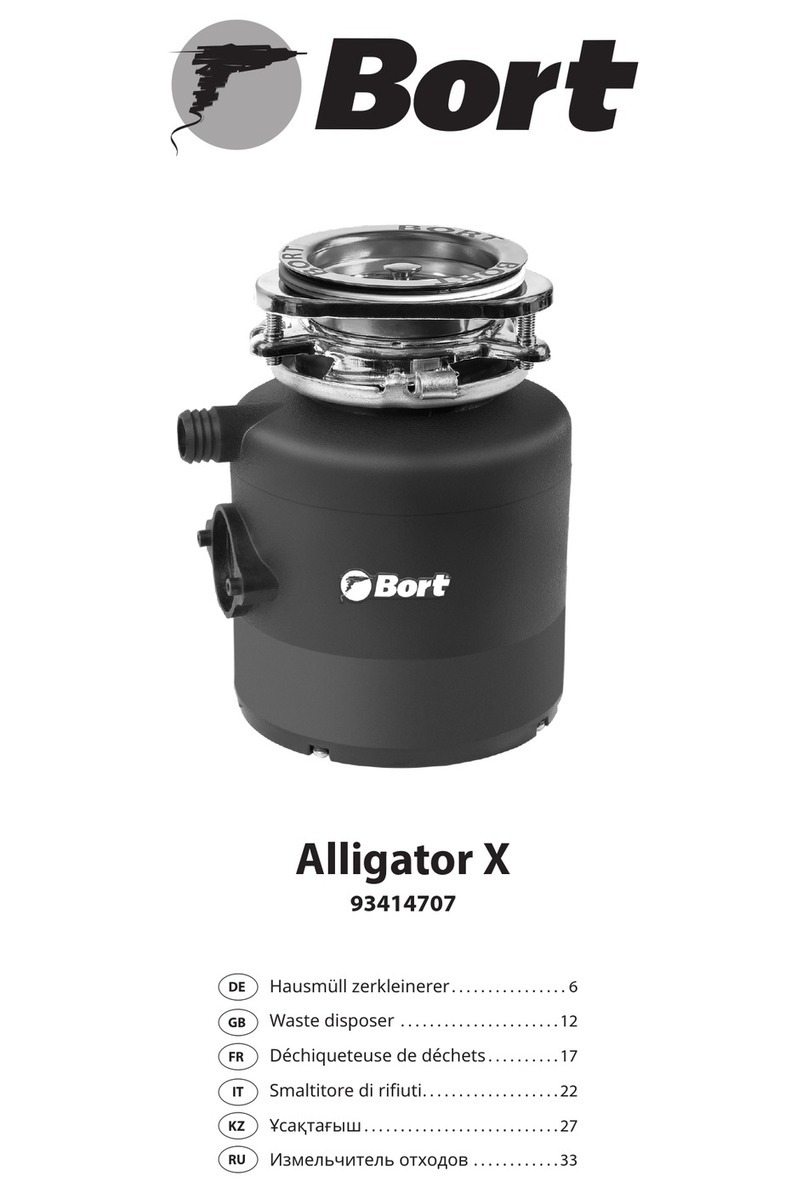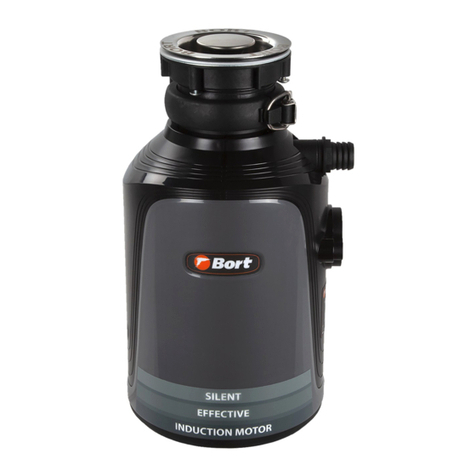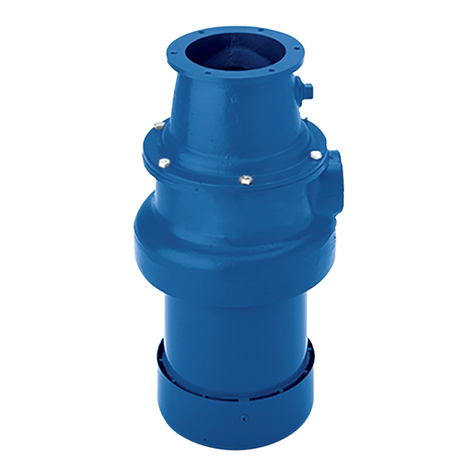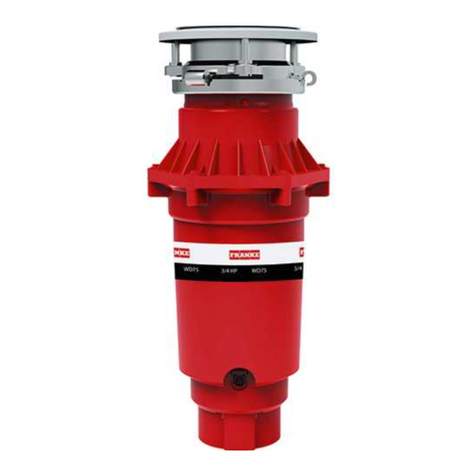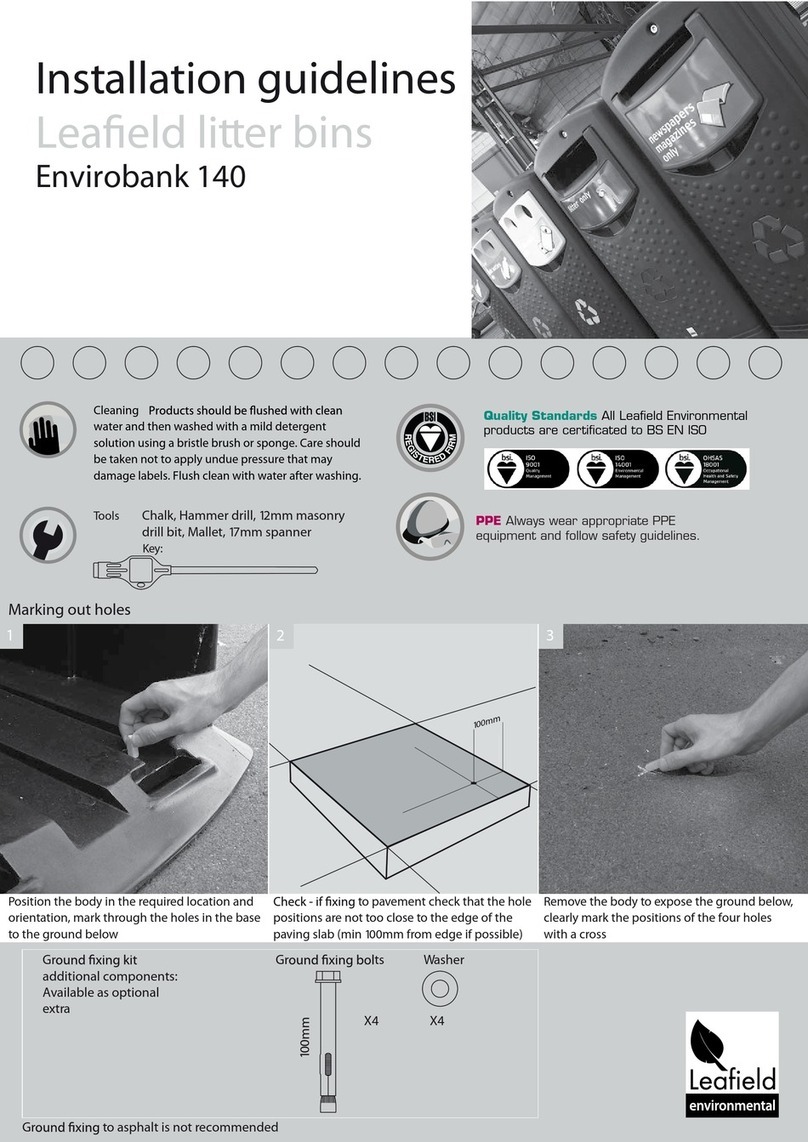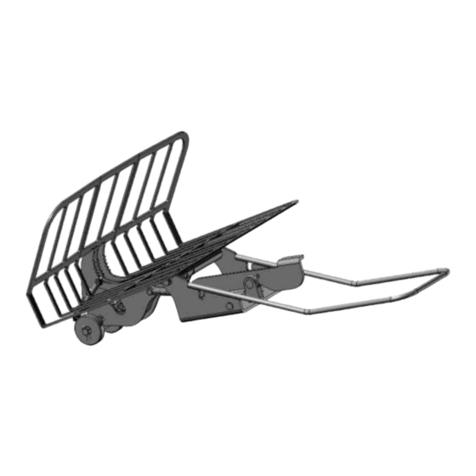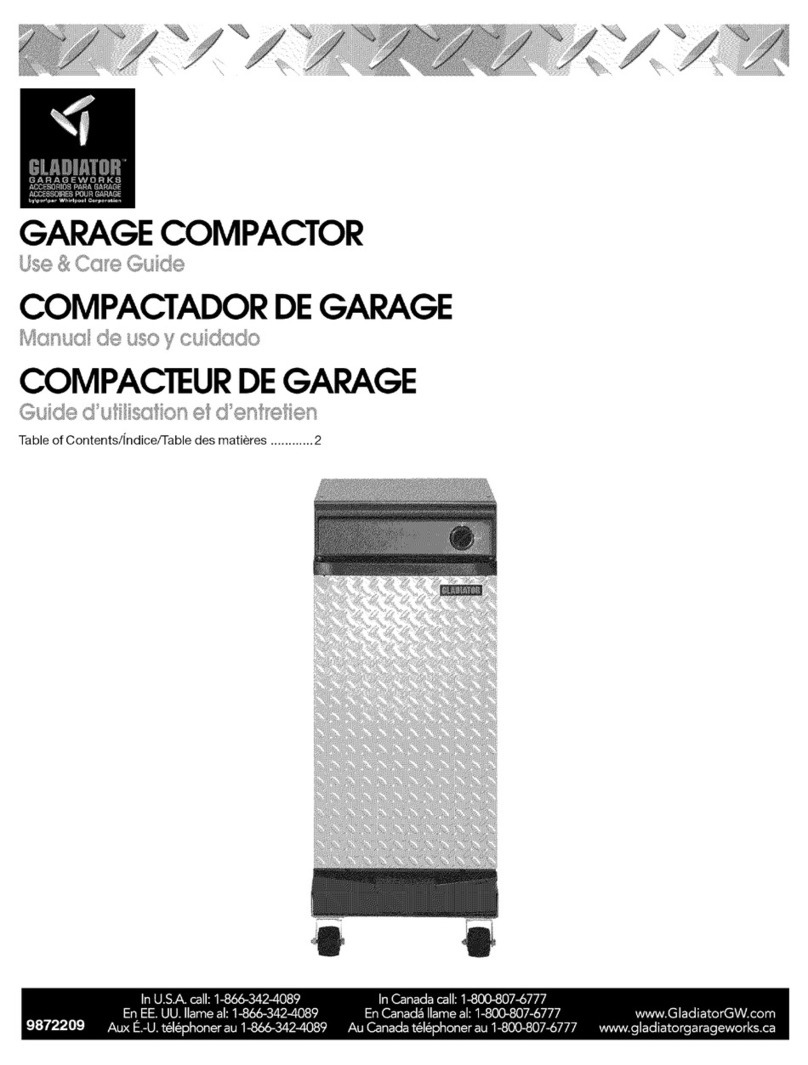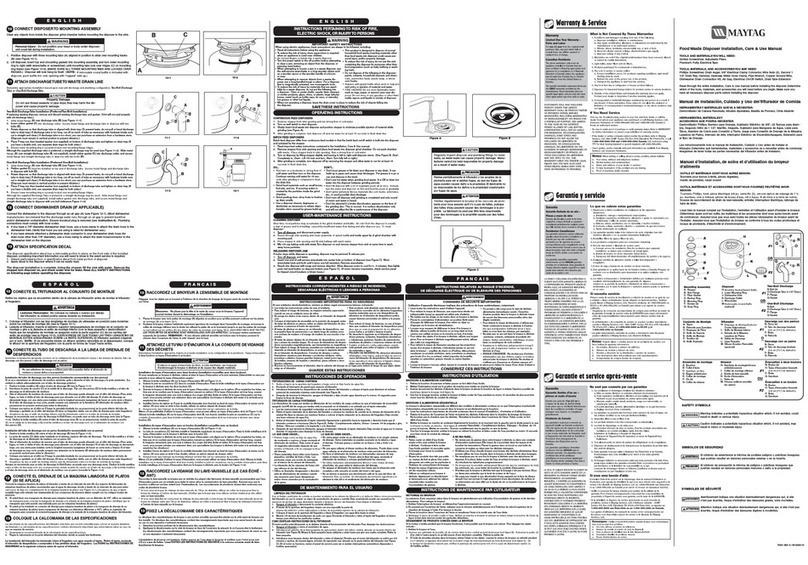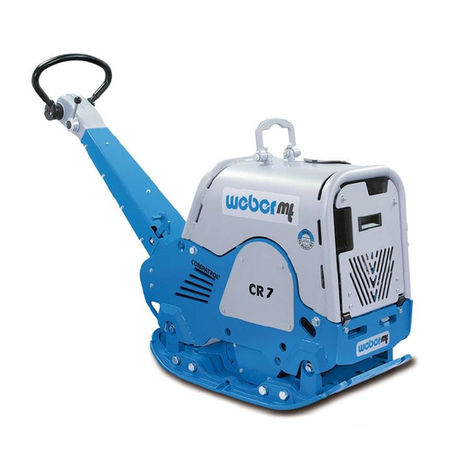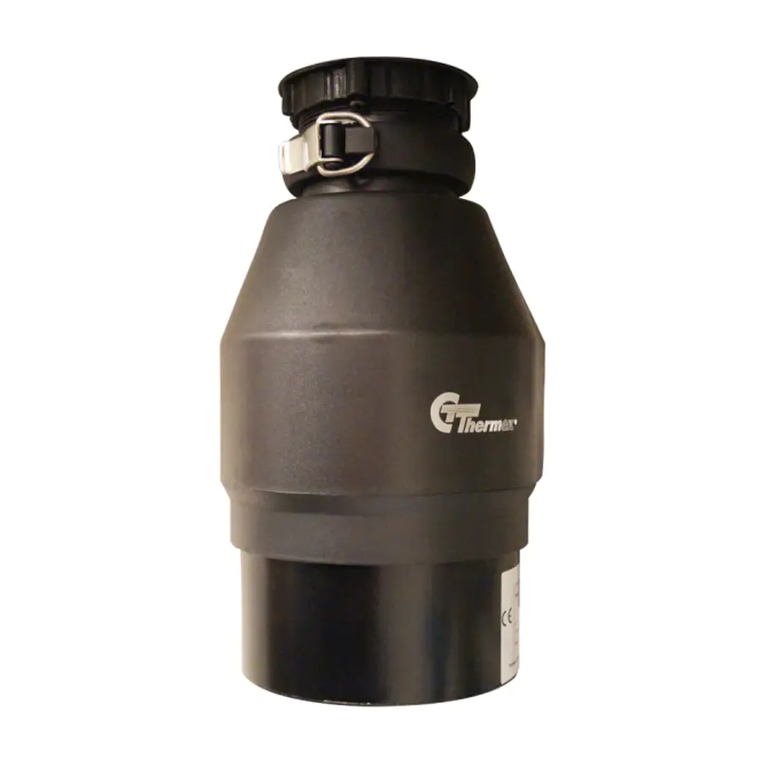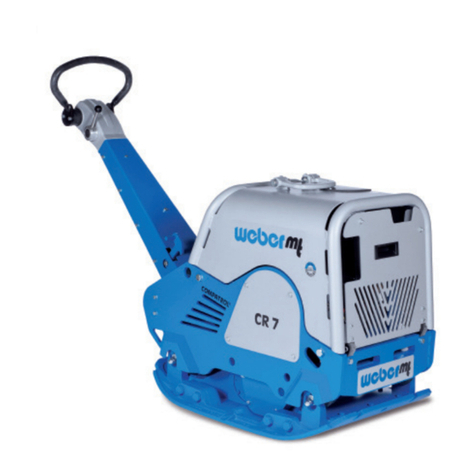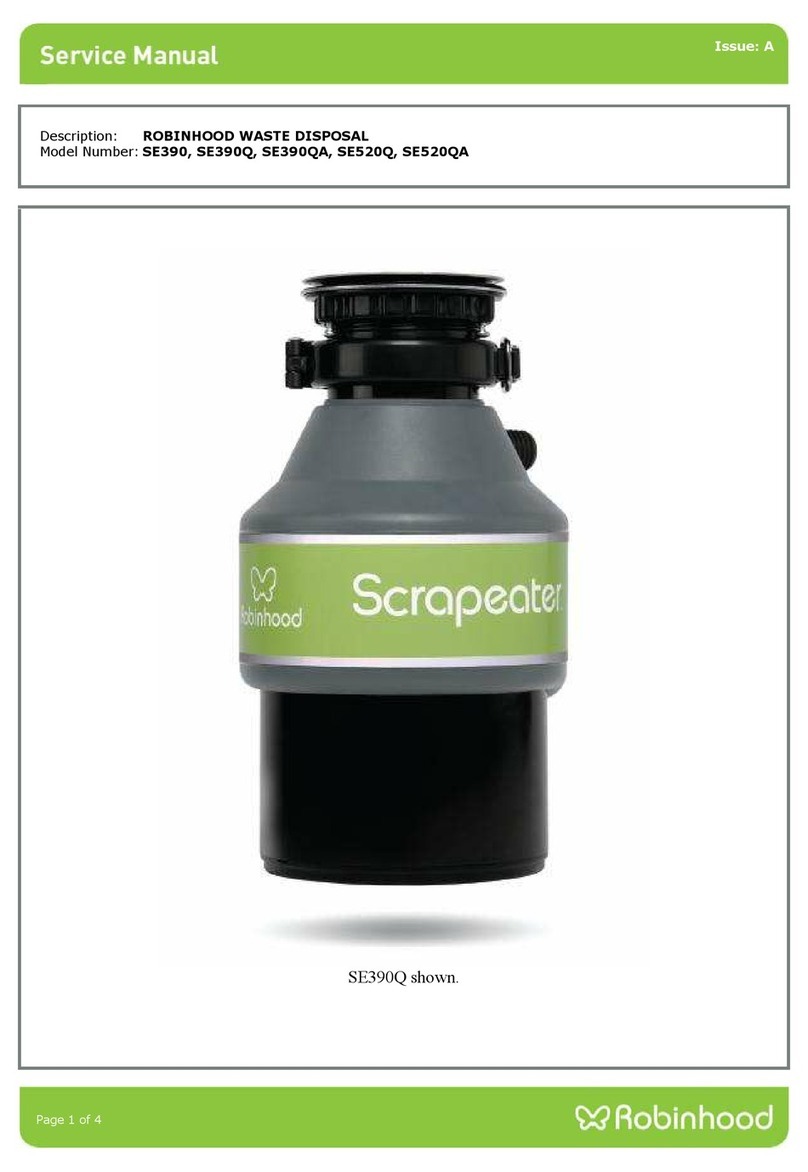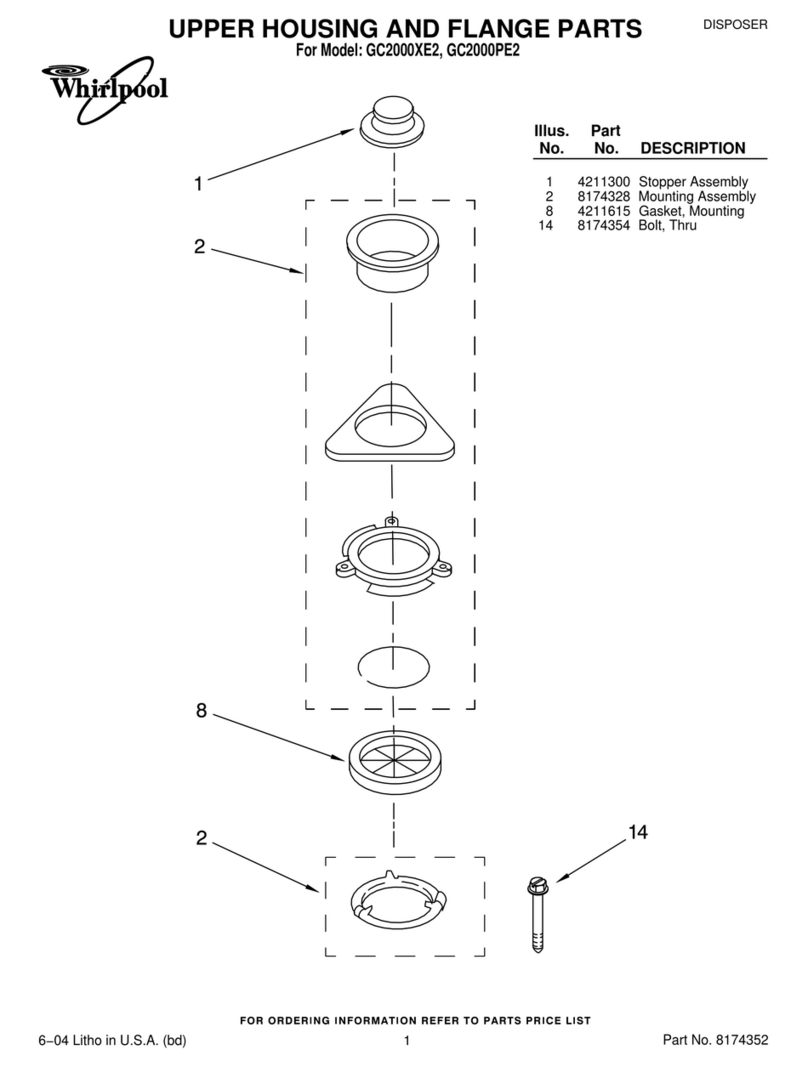
9
SAFETY
• If the air switch does not work, remove the plug
power supply from the outlet and check the air
duct pneumatic switch and delivered to the outlet
electricity.
• This product is designed for grinding food
residues at home; the ingress of substances other
than food into the disposer may cause injury and
/ or damage property. To reduce the risk of Do not
use a washer with an installed disposer not for
food purposes (for example, for bathing a child or
washing your head).
• Children should be supervised adults and should
not play with a disposer. To reduce the risk of
injury
- It is necessary to keep a watchful eye on children
use of the product.
- If the wedging in the disposer is eliminated,
turn o the appliance and disconnect it from the
electrical network.
• Use a wrench for self-removal of jammed
waste according to description in the section
„Elimination of jamming disposer„.
• Use tongs or pliers to remove foreign objects from
the product.
• To reduce the risk of injury from particles that are
thrown out by the disposer, it is prohibited to use
grinders without noise shielding screen (Fig.8.3).
• Place the plug in the drain hole, as shown in Fig.
11.2 or 11.4. Do not allow the following items
to fall into the disposer: shells, including oyster,
caustic means for cleaning pipes or similar
chemical products, glass, porcelain or plastic,
large (hollow) bones, metal objects (bottle caps,
cans, or kitchen appliances), hot fat or other hot
liquids.
• Replace worn noise glossy screen / installation
gasket / protective reector if they are worn and
are no longer able to prevent waste or water.
• Wenn der Entsorger ausgeschaltet ist, verwenden
Sie einen Stopper, um dies zu verhindern
Fremdkörper beim Schleifen Kamera. Stellen
Sie sicher, dass die Macht des Entsorgers ist
behindert.
• Bevor Sie den Reset-Knopf drücken, den
Stau beseitigen oder Fremdkörper aus der
Zerkleinerungskammer entfernen, stellen Sie
sicher, dass Das Essen ist ausgeschaltet.
• Halten Sie Hände und Finger außerhalb der
Reichweite von Entsorgungskammer.
BRANDGEFAHR:
Um die Möglichkeit zu minimieren Nicht in der
Nähe von Feuerlöschern lagern Gegenstände wie
Lumpen, Papier oder Aerosoldosen. Lagern oder
benutzen Sie kein Benzin oder ähnliches brennbare
Dampf-Gas-Gemische und Flüssigkeit in der Nähe
des Entsorgers.
Folgendes nicht zulassen Kamera-Produkte: Farben,
Lösungsmittel, Haushalt Reinigungsmittel und Che-
mikalien, Automobilüssigkeiten, Kunststoverpa-
ckungen.
HANDBUCH
1. Verwenden Sie den Luftschalter (Abb. 11.1), um
den Entsorger zu starten.
2. Senken Sie die Lebensmittelabfälle langsam in
die Kammer und installieren Sie das Filtergitter in
einer vertikalen Position (so dass es durchießt
Wasser) um Lärm zu reduzieren und möglich Wer-
fen von Abfall während des Schleifens (Abb. 11.2).
3. Nachdem der Schleifvorgang abgeschlossen ist,
schalten Sie die Entsorger und lassen Sie dasWasser
für mindestens 15 laufen s, um die Abussleitung
zu spülen.
SOLLTE
• Speisereste unter Druck mahlen kaltes Wasser
nicht weniger als 6 Liter / min.
• Mahlen Sie Feststoe wie kleine Knochen und
Fruchtrückstände zum Reinigen Hackkammern.
• Grind Zitrusfrüchte, Melonen, Gemüse und Kaee-
bohnen.
• Lassen Sie das Wasser nach dem Schleifen auslau-
fen mindestens 15 Sekunden, um den Abuss zu
spülen Pipeline.
• Ziehen Sie das Produkt aus der Steckdose, bevor
Sie den festsitzenden Rotor mit einem Werkzeug
entfernen.
• Speichern Sie keine Objekte unter dem Display,
um den Zugri auf die Schaltäche zu gewährleis-
ten Neustart.
UNTERLASSEN SIE
• Verwenden Sie kein heißes Wasser beim Schleifen
Reste von Produkten (obwohl heiß Wasser durch
das Produkt zwischen Schleifen).
• Schalten Sie das Wasser oder das Produkt erst aus,
wenn das Schleifen beendet ist. Es ist ein Geräusch
von laufendem Motor und Laufen Wasser.
